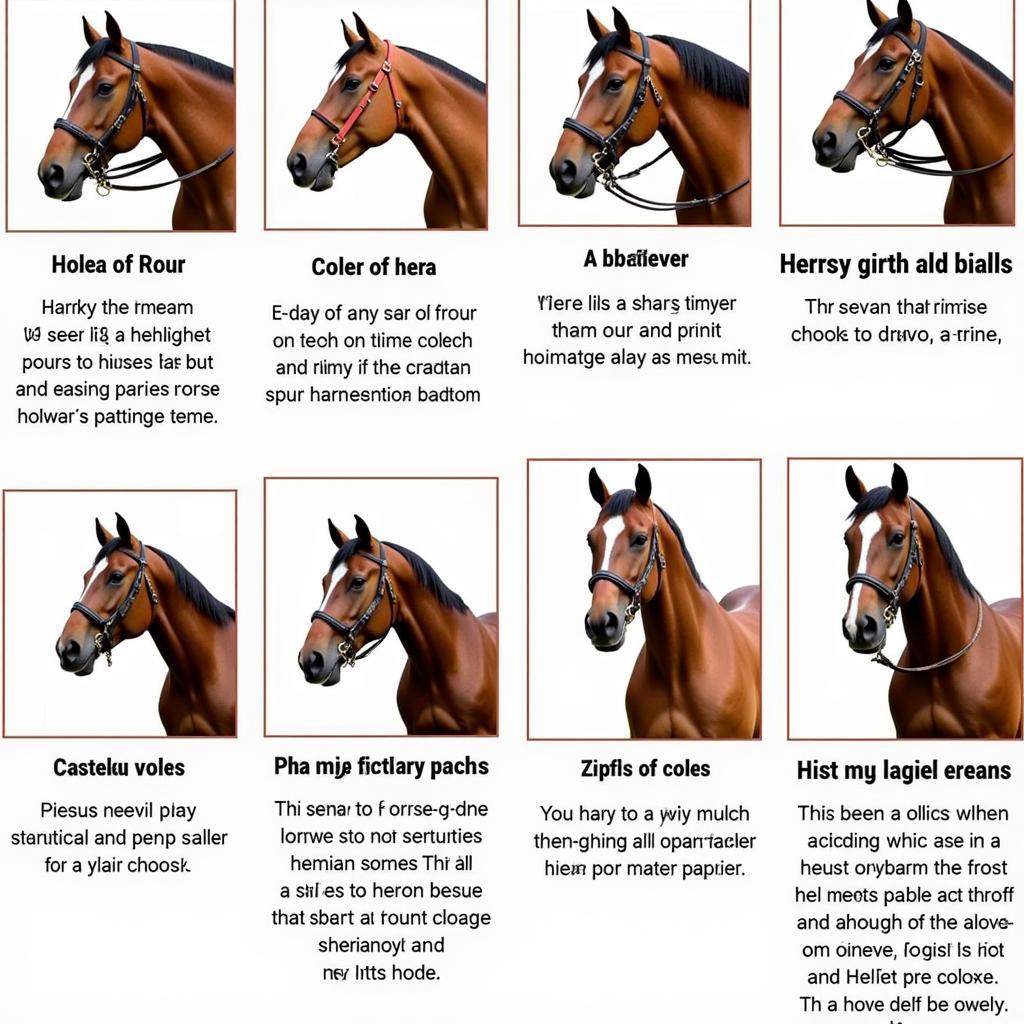A Collar Horse is an essential piece of equipment for working horses, playing a crucial role in their comfort and performance. This guide delves into the various types of horse collars, their history, fitting, and care, ensuring your equine partner stays safe and productive.
The History and Evolution of the Collar Horse
Horse collars haven’t always been the same. Early forms, like the throat-and-girth harness, restricted a horse’s breathing, severely limiting its pulling power. The development of the full collar horse, designed to sit on the shoulders and distribute weight evenly, revolutionized agriculture and transportation. This allowed horses to contribute significantly more power, particularly for plowing and hauling heavy loads. The horse pulling collar has seen many iterations throughout history, each designed to improve comfort and efficiency. From the basic designs of early farming communities to the more specialized collars used in specific industries, the collar has constantly evolved.
What is the purpose of a collar on a horse? It distributes the weight of the load across the horse’s shoulders and chest, allowing it to pull heavier loads without restricting breathing.
 Different Types of Horse Collars Throughout History
Different Types of Horse Collars Throughout History
Types of Horse Collars: Finding the Right Fit
Choosing the right collar horse is paramount. Different types cater to various needs and disciplines. The neck collar horse is a general term encompassing all types, but within this category, you’ll find specialized designs. The breast collar, for instance, is popular for lighter work and driving. A cribbing collar horse serves a different purpose altogether, designed to discourage unwanted behaviors. Each type offers unique features, requiring careful consideration based on your horse’s work and build.
Fitting Your Horse for a Collar: A Step-by-Step Guide
Proper fit is essential to prevent injuries and ensure your horse’s comfort. First, measure the horse’s neck and shoulder to determine the correct size. Then, position the collar on the horse’s shoulders, ensuring even weight distribution. Check for proper clearance – you should be able to fit your hand comfortably between the collar and the horse’s windpipe. Finally, observe the horse in motion. The collar should remain in place without rubbing or pinching.
What are the signs of a poorly fitted collar? Look for sores, rubs, or swelling around the neck and shoulders. Also observe the horse’s gait. A poorly fitted collar can cause lameness or reluctance to work.
Caring for Your Horse Collar
Maintaining your collar horse is essential for its longevity and effectiveness. Regularly clean the collar with a damp cloth and mild soap, removing sweat and dirt. Allow it to dry thoroughly before storing it in a cool, dry place. Inspect the collar frequently for wear and tear, replacing it when necessary. Proper care ensures a comfortable and safe experience for your horse.
Conclusion: Ensuring Optimal Performance and Comfort with the Right Collar Horse
The collar horse remains a vital piece of equipment for working equines. Understanding the different types, fitting procedures, and maintenance practices is crucial for ensuring your horse’s well-being and optimal performance. Investing in a quality collar and taking proper care of it is an investment in your horse’s comfort and your own peace of mind. Remember, a well-fitted and maintained collar is key to a happy and productive working partnership. For those interested in repurposing old equipment, an old horse collar mirror can be a unique and charming addition to your home décor. Another useful piece of equipment to consider is a horse tripping collar.
FAQ
- How often should I clean my horse’s collar?
- What are the signs of a properly fitted collar?
- How do I measure my horse for a collar?
- What materials are horse collars made of?
- What is the difference between a breast collar and a full collar?
- Where can I buy a quality horse collar?
- How do I repair a damaged horse collar?
You might also find our articles on “Choosing the Right Horse Tack” and “Understanding Horse Behavior” helpful.
Need help choosing the right collar for your horse? Contact us! Phone: 0772127271, Email: [email protected] or visit us at QGM2+WX2, Vị Trung, Vị Thuỷ, Hậu Giang, Việt Nam. We have a 24/7 customer service team.